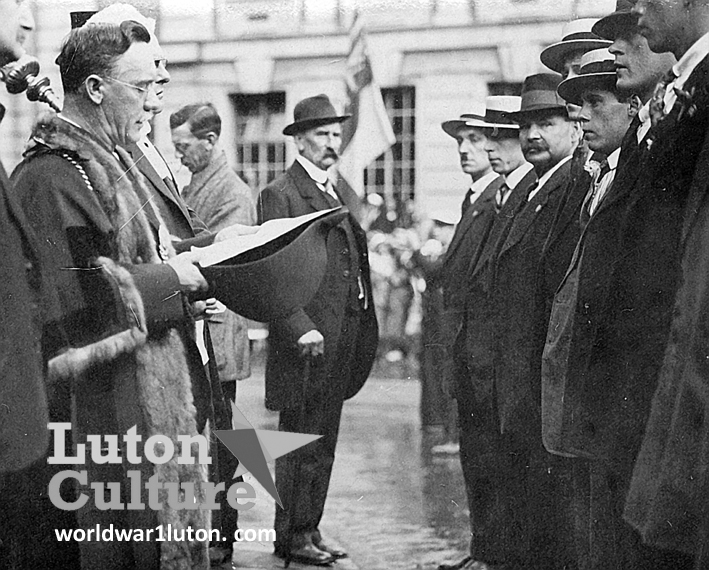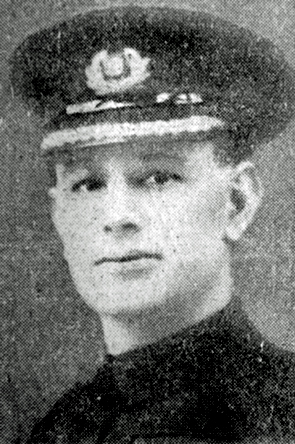
- Mayor Henry Impey reading the King's proclamation on Peace Day.
It was not until ten years after the riotous events in Luton on Peace Day that 1919 Chief Constable, Charles Griffin, revealed some added details of how Mayor Henry Impey was got away from the blazing Town Hall, and how an attack aimed at also burning down the police station was thwarted.
The man who was Luton police chief from 1917 to 1920 was in 1929 about to be elected President of the Chief Constables Association after being for eight years the Chief Constable of Brighton.
 Mr Griffin (pictured right) confirmed to a newspaper reporter that it was in a police uniform that the Mayor was smuggled through the crowds away from the burning Town Hall, and Union House - the Workhouse - became his place of refuge. There he spent the rest of the night, not in sleep but in waiting until, acting on advice, he could be got away from the town.
Mr Griffin (pictured right) confirmed to a newspaper reporter that it was in a police uniform that the Mayor was smuggled through the crowds away from the burning Town Hall, and Union House - the Workhouse - became his place of refuge. There he spent the rest of the night, not in sleep but in waiting until, acting on advice, he could be got away from the town.
This was effected at dawn, and if there were few who knew of where Mayor Impey had sought shelter there were still fewer who saw the manner of his going. An ordinary commercial lorry was driven into the Union House grounds, and in the seclusion the then Mayor took his seat in the lorry, along with an escort of police officers in civilian attire.
The passengers were kept in the background of the lorry until Luton was well behind, although few people were about at such an early hour. It was raining hard, and altogether it was a particularly cheerless Sunday morning.
In order that the Mayor's whereabouts should be kept a secret he was set down on the outskirts of London. This was at a tramway terminus and, on account of it being a Sunday, he had some hours to wait in the tramways shelter before there was a car available to take him to his destination.
Mr Griffin recalled his own experiences of the fateful July 19th, 1919, when "ex-soldiers stormed the Town Hall and burned it to the ground". When the battle began Mr Griffin had 60 policemen under him. When it ended at 2am, all but four were badly disabled.
The rioters threw tins of petrol through the Town Hall windows and fired the place. The horse which Mr Griffin was riding was stabbed and died.
The next day the rioters appeared with the intention to also burn down the police station, where it became known that the Town Council were holding a meeting that Sunday night. But they had something of a shock - they expected to see only four policemen and Mr Griffin, but during the night the Chief Constable had obtained help and was able to hide 200 extra police in the police station. The raiders had scarcely got assembled outside the police station when they had their surprise.
The reporter himself recalled: "I was in the station yard, and shall always remember how it filled with uniformed men and how, at a signal, the gates were flung wide open and the imported police dashed out with batons drawn and laid about those who were not quick enough to beat a retreat. It was an awesome experience and one that did not inspire one with with any desire to forsake the shelter of the station premises for the streets so hurriedly cleared."
[The Pictorial: Tuesday, July 9th, 1929]

